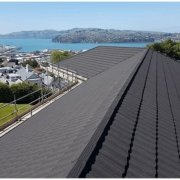The easiest way to tell if you need a roof is to safely get up onto your roof and inspect it for the following
HOW TO TELL IF YOU NEED A RE-ROOF?
Asphalt Shingles – The shingles are peeling off or appear to be sun faded or have some crack.
Concrete – Your concrete tiles are chipped and/or cracking in multiple places.
Decramastic – Your tiles are dented, rusty or the chip appears to be coming off.
Longrun (Iron) – Your roof is rusty or dented.
When making the decision to put a new roof on your home, it’s good to know what to look for and what is involved. Also if you’ve never been through the re-roofing process before, you likely have a number of questions, such as:
- How to tell if you need a re-roof?
- If you do, where do you start?
- How do I find the right installer?
- What should you look for in a quote?
- Will the roof installation disrupt my life?
These are great questions. We want to help you prepare, so in this blog we walk you through the re-roofing process and provide all the answers. The good news is that it’s probably more straightforward than you think.
I NEED TO RE-ROOF, BUT WHERE DO I START?
It’s a smart idea to do a little of your ow research before talking to a roofing professional. This way you’re prepared with questions and know what to look out for. Below are some things to consider:
Timing – Re-roofing is often weather dependent so for a timely re-roof, you should choose a time of year that’s usually dry and calm in your area. However, if the work has to be carried out during the wetter months your roofers will use a waterproof sheet (tarpaulin) on your roof to prevent any water damage. They’ll only work one section at a time, replacing each section before moving on to the next one just in case it rains.
Your roof style – Know the style of your roof – this will influence which roofing materials will be best to use.
Your Location – The weather and other environmental conditions should also greatly influence your roofing material choice.
HOW DO I FIND THE RIGHT INSTALLER?
Now that you have an idea about what your roof needs – the next step is to look for a great installer that you can trust to do the job. A roof is a long-term investment so looking at warranties and using experienced installers is really where your focus should lie. Get in touch for more information about our installers

















